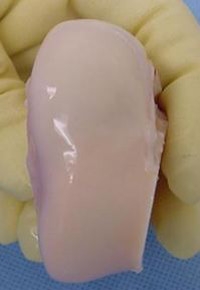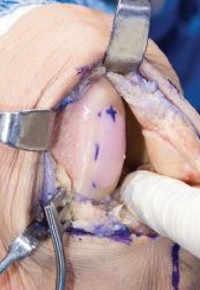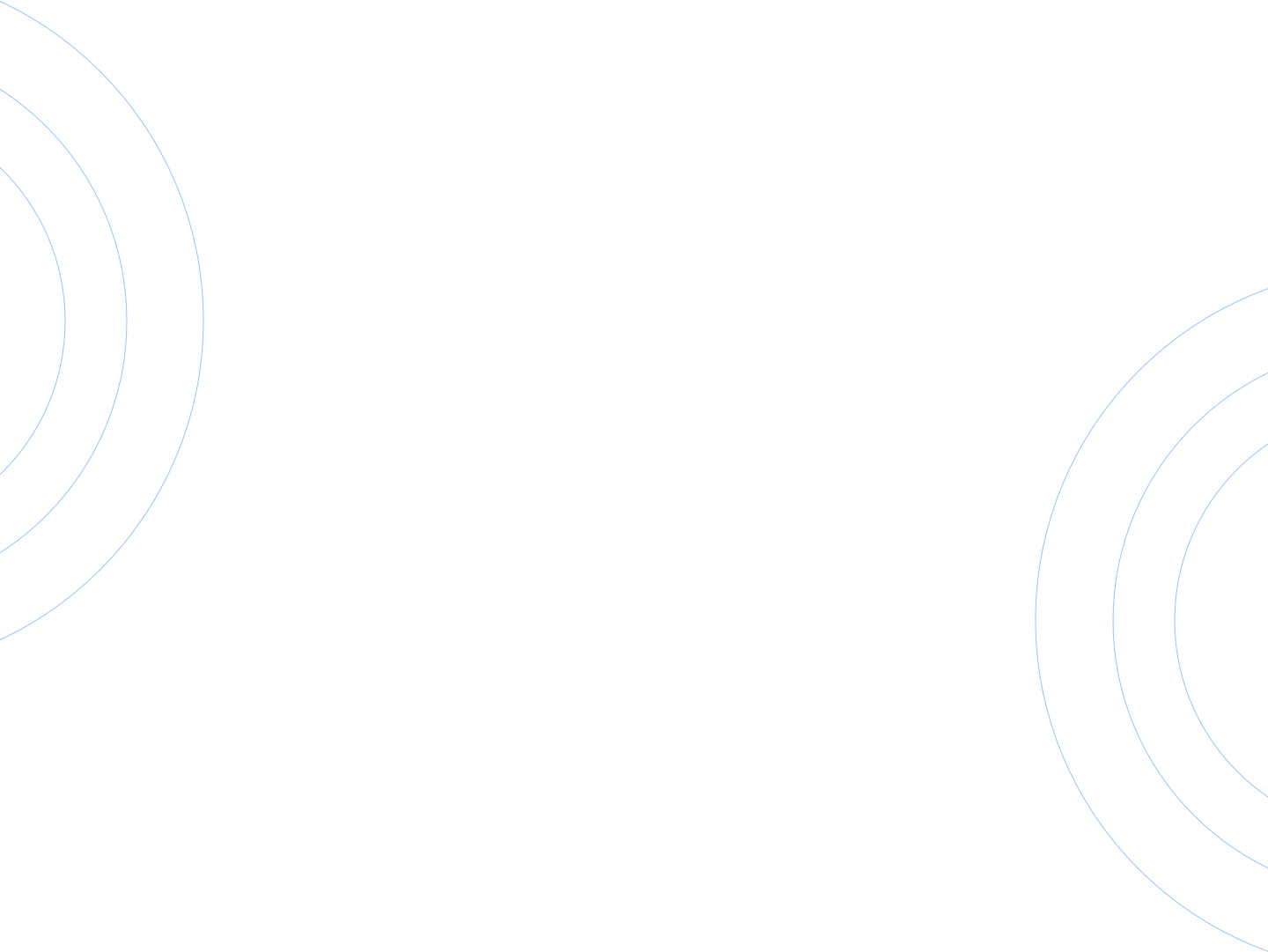BioUni OATS
When a cartilage lesion is too large for an arthroscopic OATS (Osteochondral Allograft Transplantation) procedure, a single large graft of bone and cartilage can replace a cartilage defect. The Bio Uni OATS procedure consists of grafting a section of articular cartilage from an allograft donor to the defect of concern. Multiple sizes allow flexibility to adjust the width and length of the cartilage defect and to ensure proper restoration of the articular surface with a single cartilage piece.The recipient site is prepared by creating a socket that will accommodate the graft. The graft is then inserted into the prepared site. It is called a "BioUni" because it is similar to a partial knee replacement but instead of metal and plastic it uses biologic material.
Donor Graft

After Placement of Bio Uni OATS

Common Questions About BioUni OATS
What is the difference between a BioUni OATS and an arthroscopic OATS procedure?
A BioUni OATS (Osteochondral Allograft Transplantation) uses a larger allograft and is utilized when a cartilage lesion is too large for an arthroscopic procedure to treat.
When should a BioUni OATS procedure be chosen over an arthroscopic OATS procedure?
When the lesion is too large and/or when the lesion is not circular but more elliptical in shape.
How is a BioUni OATS performed?
The cartilage lesion is first sized, and an appropriately shaped allograft is created. The lesion is then removed and a PowerPick can be used to microfracture the base of the socket. Demineralized Bone Matrix is used to fill in gaps and assist in the recovery process. The allograft is then tamped into the socket.










